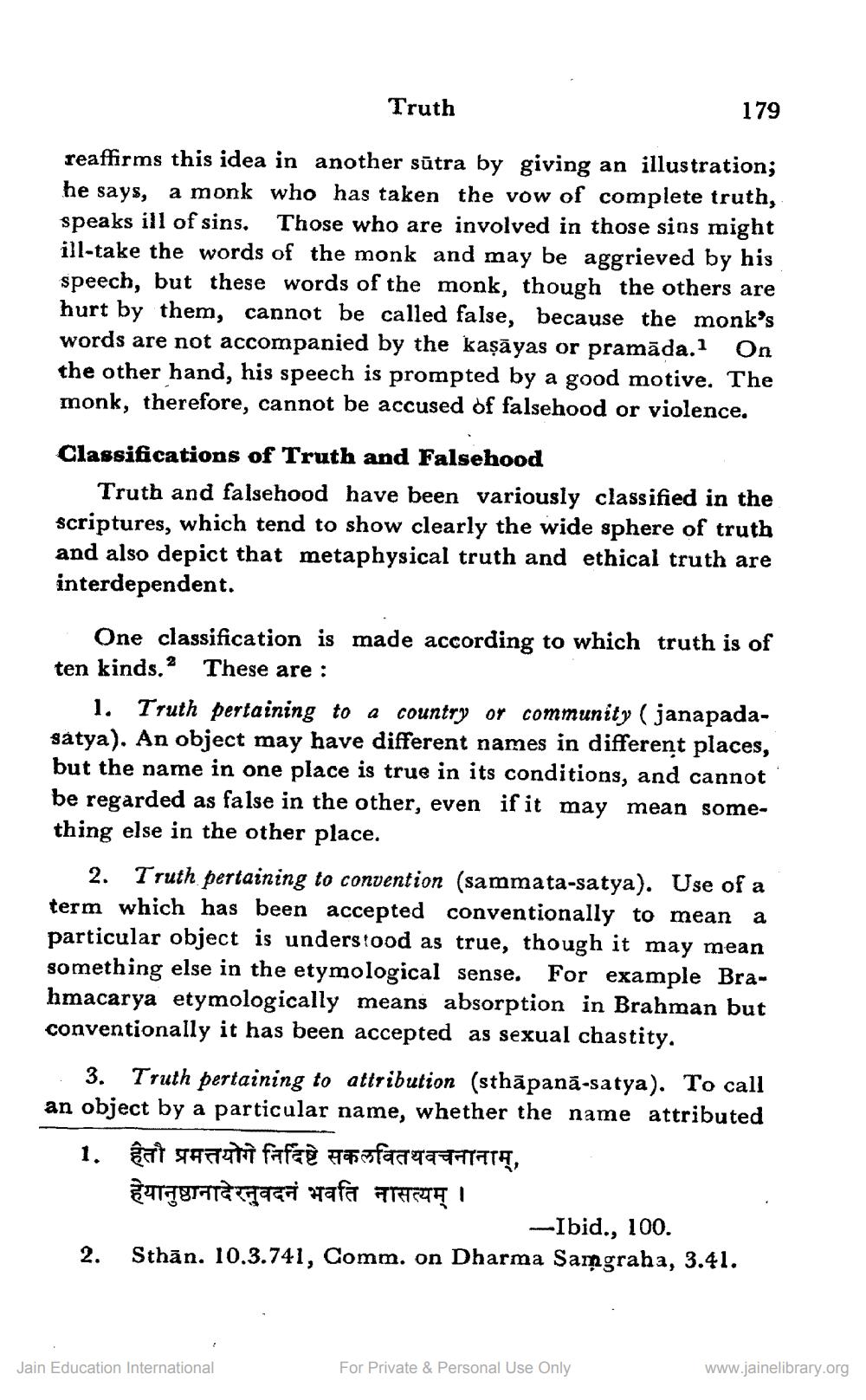________________
Truth
reaffirms this idea in another sutra by giving an illustration; he says, a monk who has taken the vow of complete truth, speaks ill of sins. Those who are involved in those sins might ill-take the words of the monk and may be aggrieved by his speech, but these words of the monk, though the others are hurt by them, cannot be called false, because the monk's words are not accompanied by the kaṣāyas or pramāda.1 On the other hand, his speech is prompted by a good motive. The monk, therefore, cannot be accused of falsehood or violence.
Classifications of Truth and Falsehood
Truth and falsehood have been variously classified in the scriptures, which tend to show clearly the wide sphere of truth and also depict that metaphysical truth and ethical truth are interdependent.
One classification is made according to which truth is of ten kinds.2 These are:
179
1. Truth pertaining to a country or community (janapadasatya). An object may have different names in different places, but the name in one place is true in its conditions, and cannot be regarded as false in the other, even if it may mean something else in the other place.
2. Truth pertaining to convention (sammata-satya). Use of a term which has been accepted conventionally to mean a particular object is understood as true, though it may mean something else in the etymological sense. For example Brahmacarya etymologically means absorption in Brahman but conventionally it has been accepted as sexual chastity.
3. Truth pertaining to attribution (sthapana-satya). To call an object by a particular name, whether the name attributed 1. हैती प्रमत्तयोगे निर्दिष्टे सकलवितथवचनानाम्,
यानुष्ठानादेरनुवदनं भवति नासत्यम् ।
-Ibid., 100.
2. Sthan. 10.3.741, Comm. on Dharma Samgraha, 3.41.
Jain Education International
For Private & Personal Use Only
www.jainelibrary.org




